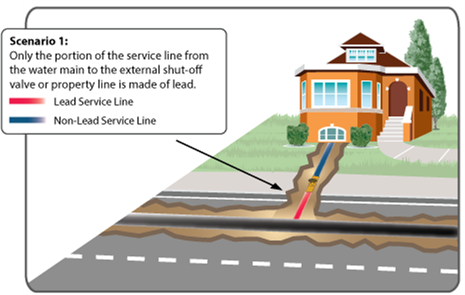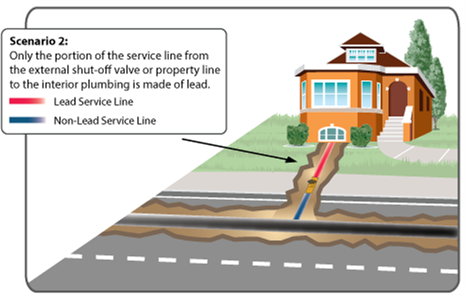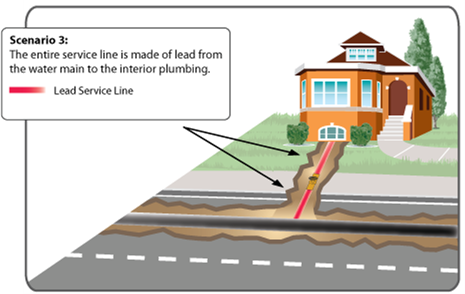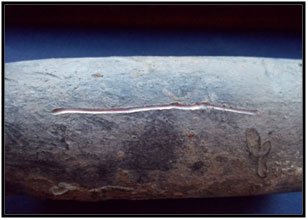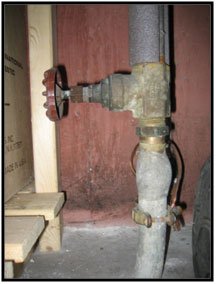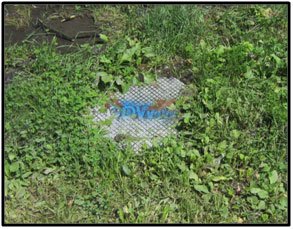Advice to Chicago Residents About Lead in Drinking Water
- How do I know if I have a lead service line?
- What do lead service lines look like?
- Cleaning aerators
- Flushing instructions
- Collecting water samples
See also Chicago Lead in Drinking Water Study.
EPA and the Centers for Disease Control and Prevention believe there is no safe level of lead exposure. Lead is harmful to health, especially for children. While paint, dust, and soil are the most common sources of lead, drinking water can contribute 40 to 60 percent of an infant's lead exposure.
The goal is to remove as much lead from your drinking water as possible.
Chicagoans concerned about lead in their drinking water have a number of options to help reduce the amount of lead in their drinking water.
- Have your water tested. Many public water systems will test drinking water for residents upon request. Chicago residents can call 311 for information. You can also check the State of Illinois drinking water website for a list of laboratories certified to analyze for lead.
- Be aware of any work that could disturb your lead service line, such as water main replacement, lead service line repair or replacement of part of the service line.
- Run water before use if it has not been used for several hours. The amount of time to run the water will depend on whether the home has a lead service line or not.
- Use only cold water for drinking, cooking, and preparing baby formula.
- Purchase a water filter that is certified to remove "total lead."
- On a regular basis clean and remove any debris from faucet aerators to clear out any particles of lead that may become trapped in the aerator.
- Purchase lead-free faucets and plumbing components.
- Remove the entire lead service line.
More Information
How do I know if I have a lead service line?
If the plumbing in your home is accessible, you may be able to inspect your own plumbing. Otherwise, call your water provider or hire a plumber.
Some common situations (click to enlarge images):
Your house might also have a short segment of lead pipe — commonly called a "lead gooseneck" — that connects the water main to the service line. You cannot inspect the gooseneck since it is under the street.
What do lead service lines look like?
Cleaning aerators
Many taps have an aerator as part of the faucet assembly. Aerator screens are not intended to remove contaminants in the water, but may trap sediment or debris as water passes through the faucet. Lead-bearing sediment may end up in drinking water from physical corrosion of leaded solder and can build up in the aerator over time.
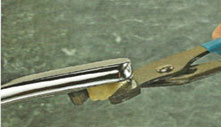
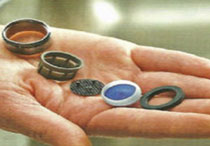
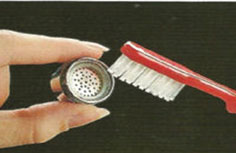
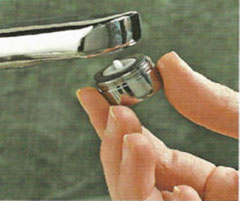
Flushing instructions
Flushing when the water has not been used for several hours
Whether or not you have a lead service line, whenever the water has not been used in the household for several hours, you should run the water to flush the lead out. The more time water has been sitting in your home's pipes, the more lead it may contain. This is true even if you do not have a lead service line because plumbing fixtures like faucets and valves can contain small amounts of lead. However, the amount of time you should run the water to flush the lead out depends on whether you have a lead service line or not.
How long to run the water if you do not have a lead service line
Running the water for 30 to 45 seconds at the kitchen tap should clear the lead from your household plumbing to the kitchen tap. If you have old (corroded) galvanized iron pipe in your home, it may take up to 1 minute to fully flush the tap. Once you have done this, fill a container with water and store it in the refrigerator for drinking and cooking throughout the day.
How long to run the water if you do have a lead service line
Flushing times can vary based on the length of your lead service line and the plumbing configuration in your home. The length of lead service lines varies considerably. If your home is set back far from the street, a longer flushing time may be needed to lower lead levels, which may not be a practical solution.
The results of the lead sampling study conducted in Chicago in single-family homes with lead service lines showed that it could take 3 minutes of running the water to significantly reduce lead levels and it is not possible to clear all of the lead from the drinking water using flushing. There will always be some lead in the water. If you have old galvanized iron plumbing, lead can deposit in the corroded pipes and it can take up to 5 minutes of running of the water to significantly reduce lead levels.
In addition, flushing will vary with your household plumbing. Flushing one tap in the home in most cases does not clear lead from all of the household plumbing, because the water flows from the lead service line only to the faucets that are open, so running the water anywhere for 3-5 minutes will clear most of the lead from the lead service line, but depending on your household plumbing there may still be lead in the pipes and other taps in your home. You may need to flush the tap you are going to use water from for another 30-45 seconds to clear any remaining lead.
If you have a lead service line and you flush the tap you are going to use, such as the kitchen tap, for 3-5 minutes (or longer if instructed to do so by your water provider) this will clear most of the lead from the water.
To conserve water, instead of flushing the tap to be used for 3-5 minutes, take a shower or do a load of laundry. Either activity would clear most of the lead from the lead service line. However, taking a shower or doing a load of laundry will not flush the lead out of the entire the interior plumbing. Flushing the kitchen or bathroom tap for additional 30-45 seconds after showering or doing a load of laundry will clear the rest of the plumbing to the kitchen or bathroom tap.
Another alternative to conserve water is watering the garden for 3 minutes using the outside tap, which will clear the high lead from within the lead service line. This will not clear any of the lead from the internal plumbing, so right after watering the garden, flush the kitchen or bathroom tap for an additional 30-45 seconds.
After you have flushed your plumbing, filling up a container of water and storing it in the refrigerator for drinking and cooking throughout the day will reduce your lead exposure.
When is flushing not recommended?
- If your lead service line is very long, flushing may not effectively lower lead levels.
- If your home has old (corroded) galvanized iron pipes, flushing may not be practical.
If the water flows slowly in your home and you have galvanized iron pipes, these pipes may be severely corroded inside. If you have a lead service line, the water may need to run for at least 5 minutes to significantly reduce lead levels, which may not be a practical solution for you, and you may wish to consider using a water filter that is certified to remove 'total lead'. Total lead includes lead that is dissolved in the water as well as lead particles that come loose from the plumbing.
Instructions for flushing out the particles and sediment following a disturbance to your lead service line.
If you have a lead service line and your lead service is disturbed, lead in your drinking water can increase to dangerous levels and particles containing high levels of lead can become trapped in your home plumbing.
Avoid bringing the lead-containing particles and sediment into your home or to the tap you drink from by following these instructions whenever your lead service is disturbed.
Find the closest available tap to where the water comes into the home that is not used for drinking water (such as an outside hose bib, laundry sink or bathtub) to flush the lead-containing particles out of the plumbing. Fully open the cold water tap and let the water run for at least five minutes to flush the lead-containing particles out of the plumbing so that the particles and sediment do not enter the rest of your household plumbing. The key is to pick the closest faucet not used for drinking that would result in the least amount of particles and sediment coming into the home plumbing.
Collecting water samples
If you are having your water tested for lead, it's important that you collect water samples in a specific way to ensure accurate results. The sampling recommendations and instructions depend on whether you have a lead service line or not. Testing the water for homes with lead service lines is more complex than for homes without a lead service line, so there are different sampling instructions for each situation.

